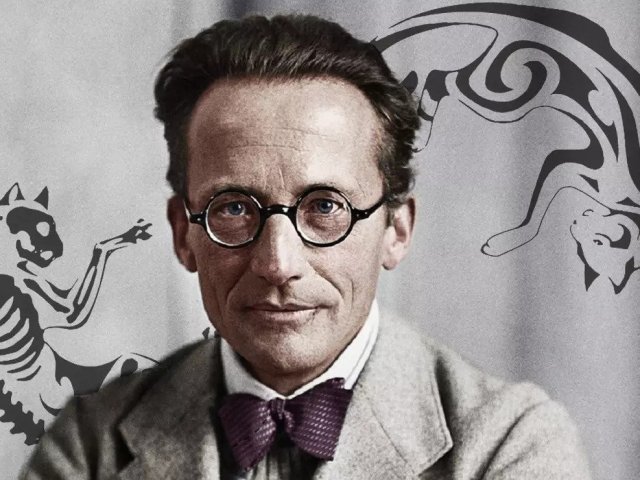The State Darwin Museum is one of the oldest and largest natural history museums in Europe, as well as the first and largest museum of evolution in Russia. Over 100 years it has accumulated the richest scientific collections. It features more than 400,000 exhibits and grounds equipped with state-of-the art computer hardware. For the first time in the global museum practice, the Darwin Museum managed to connect audiovisual effects with unique exhibits. Since 1988 the State Darwin Museum has been headed by Anna Iosifovna Klyukina, an Honored Worker of Culture of the Russian Federation, Candidate of Cultural Studies and Doctor of Pedagogical Sciences.
The founder and the first director of the Darwin Museum was Alexander Fyodorovich Kots, was a Soviet scientist, Doctor of Biological Sciences, Professor.
In 1905 Dr. Kots traveled abroad to Villa Franca for a workshop in hydrobiology. The scientist was very interested in how Darwinism courses are taught at Europe’s greatest universities. Personal acquaintance with the pillars of evolutionary teaching including Hugo de Vries, August Weismann, Ernst Heckel proved very useful to a student of biology; yet he was quick to discover that the lack of demonstration materials in classrooms made lectures dry and overly formal. The young researcher had embarked on a long tour of natural history museums in Munich, Berlin, Dresden, Stuttgart, Wroclaw, Leipzig, Frankfurt, Jena, Bonn, Brussels, Paris, London... They bore an uncanny resemblance to the displays of a huge library, behind every glass an extremely rare manuscript totally out of reach of an unprepared visitor. “Everywhere one saw the same monotonous rows of stuffed beasts or birds, as if the most skilled staging of animal life could ever reveal the meaning of natural studies,” Alexander Kots wrote. Even in the renowned Darwin Hall of the British Museum he was struck by the “wealth of facts and the paucity of unifying ideas treated with cursory attention at best.”
It was at that moment that Dr. Kots recalled his collection! He became preoccupied with the idea of creating a museum that would promote the foundations of evolutionary teaching. But how could he accomplish this goal? He had no resources at his disposal, not even a room in which to build his dream. He availed of nothing but perseverance and enthusiasm.
It was clear that the new museum should fuse together two creative impulses – theoretical knowledge and its visual confirmation. A fortunate development soon turned up. In 1907 Alexander Kots was invited to Moscow Higher Women’s Courses to teach practical classes in animal anatomy. Later, the young teacher was entrusted with lecturing on Darwinism.
This event became a turning point in the fate of the museum and its founder. From a tight apartment the collection moved to the zoological laboratory of the Courses and “...prior to lectures, dozens of specimens were taken from cabinets and placed on tables in the auditorium, arranged in an order called for by the role of each object.”
The young audience met the devoted lecturer with attention and gratitude.
Museum Exhibits
The Macroevolution Hall of the museum lets visitors travel to the most distant past of our planet with fossil remains of dinosaurs and other creatures of bygone eras. The Diversity of Life and Zoogeography halls let one tour countries and continents full of diverse representatives of the animal world.
The central hall of the museum features an audiovisual music program, A Living Planet. This is a unique project, unparalleled in Russia. Aided by light, 3D sound and exciting special effects, the museum and exhibits themselves come to life, immersing the viewer in the history of the Earth and its infinite diversity. For the first time in museum practice, the possibilities of audiovisual art have become connected with natural science displays at the museum. In only 20 minutes the audience gets a glimpse of the whole history of life on Earth encompassing 4.5 billion years of evolution.
Now it has become possible to understand our planet with a new, unprecedented level of technology. Museum visitors will find a flamboyant installation combining a spectacular coordinated display of video, 3D sound, and smart lights together with various visual effect devices and, of course, museum exhibits with age-old histories. The walls of the Diversity of Life on Earth Hall will turn into a giant panoramic screen 34 meters long, increasing the projection area to 200 square meters.
The exhibit in the Diversity of Life on Earth Hall teaches about different natural communities of living organisms including oceanic, coastal, rainforest, savannah and mountain communities.
The remarkable diversity of life on Earth, and the infinite ways living organisms use to adapt to their habitat, will impress the imagination of even the most sophisticated observer. Living organisms can be found everywhere: from hot springs in vents of deep-sea volcanoes to permanently ice-covered mountain peaks. Life in marine communities has long been thought to be concentrated in the coastal zone, but most recently, extremely diverse deep-sea communities have been discovered grouping around underwater volcanoes where Earth’s inner heat rather than solar energy ensures their survival. In terrestrial communities, we can see the greatest density of life in tropical rainforests, where over 45 of all known plants (out of 350,000 species) and almost half of all terrestrial animals (out of more than 1,500,000 species) can be found.
An interactive multimedia project, Travel the Evolutionary Path, is now open at the museum. This is a journey one can embark on without leaving Moscow. It will take visitors back 3.5 billion years, let them walk through the maze of evolution and have their questions answered by following the emergence and development of various species on Earth.
Visitors will learn which of the animals inhabiting the seas more than 400 million years ago have survived to the present day, what are calamites, what the likely ancestor of birds looked like, what stone can be used to obtain fire, and how the Neanderthals hunted – these and many other interactive tasks will appear throughout the course of their journey. As one travels through eras and periods (each step spanning millions of years of history), one will see the largest and the smallest, the most predatory and the most unusual representatives of the time. All reconstructions of ancient animals and plants (numbering more than 50) are life-sized. The journey will be fascinating, spectacular and informative. Here one can touch with their own hands the minerals that have witnessed the first living organisms on Earth, fossilized shells, imprints of archaeopteryx, the first bird on Earth, a mammoth tooth and trilobites.
The entrance area to the interactive multimedia exhibit Travel the Evolutionary Path resembles a ribbon of time carrying us hundreds of millions of years ago. Back then, a warm sea covered the area around present-day Moscow, and life in the sea was full of amazing creatures. Fossilized remains of ancient trilobites and ostracoderm fish, ammonites and belemnites, sea urchins and lilies, the extinct reptile ichthyosaur and the cladoselache shark have survived to present day – one can literally touch them.
“Know Yourself – Know the World” is an interactive educational center at the Darwin Museum. The whole universe is concentrated on an area of 200 square meters, ranging from the most minute invisible microorganisms to objects of planetary scale. With the help of the latest technology we can not only see, but also hear, touch, and catch the smell of the world around us and learn a lot new about ourselves and our bodies.























